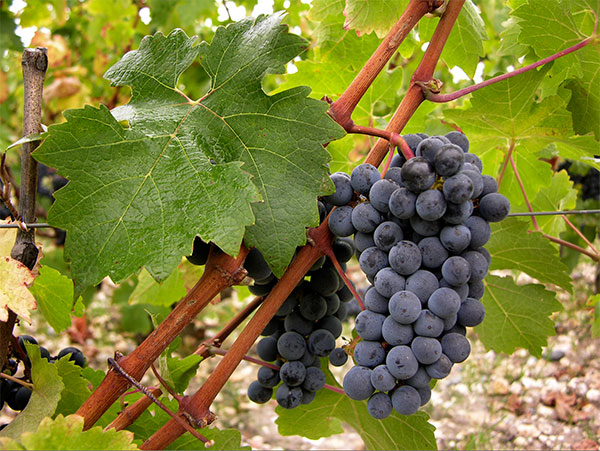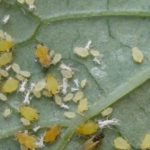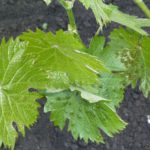Almost everyone has heard of Cabernet Sauvignon grapes, as well as the eponymous wine. This technical grade is grown usually for winemaking. Many gourmets consider him a "king of grapes", as well as chardonnay. Let's try to understand the reasons for the popularity of Cabernet Sauvignon. Let's talk about the description and properties.
Table of contents
Description of the grape variety Cabernet Sauvignon
This hybrid was bred by crossing in the 17th century in France.
The main characteristics of the variety:
- Saplings differ in strong growth.
- The leaves of the plant are rounded, the edges of which are bordered with a characteristic red shade.
- Flowers bisexual.
- This culture is characterized by a low acidity of approximately 8 g / l.
- Productivity 94 c / ha.
Sugar grapes is about 19-21% and is not inferior to other similar varieties.
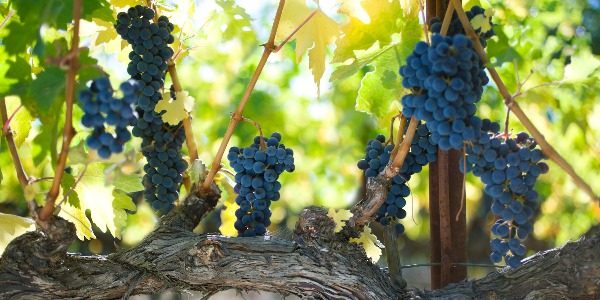
The ripening period of berries primarily depends on the purpose:
- if the grapes are used to make table wines, the fruits are harvested for approximately 143 days;
- for the preparation of dessert wines, the ripening period is slightly longer and is approximately 165 days.
The culture grows best on the southern slopes. In case there are no natural hills, it is necessary to make artificial ones. The terrain must be well warmed by the rays of the sun. This variety is grown in the southern regions of Moldova. Caucasus, Ukraine, Kazakhstan, France, USA, Italy and Argentina.
Characteristics of berries
The clusters have a characteristic cylindrical shape, are visually attractive and are up to 15 cm in length, and up to 8 cm in width. The brushes are distinguished by a loose structure.
The main characteristics of the berries:
- bunch weight on average 70 g;
- the color of the berries is dark blue;
- externally berries are covered with a wax raid;
- the shape of the berries is correct, round, in diameter 12-15 mm;
- skin is relatively thick;
- the pulp is juicy;
- taste sweet, solanaceous;
In the berry about 1-3 bones.
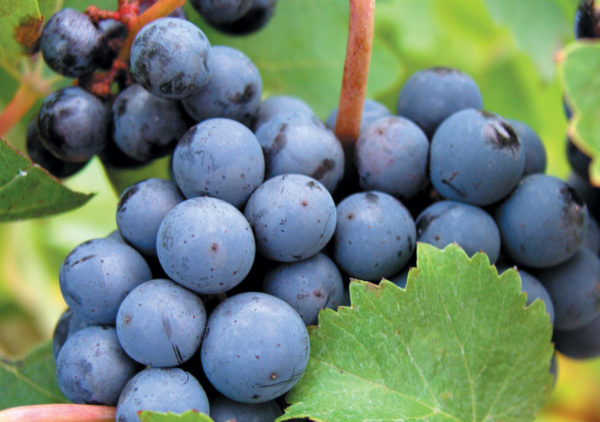
Advantages and disadvantages
Let's try to figure out what advantages and disadvantages of this culture.
The main advantages of the Cabernet Sauvignon grape variety:
- Pleasant taste of berries.
- Disease resistance.
- This culture is widely used in the production of vintage wines and high-quality juices.
- Resistance to weather conditions: clusters are able to hang on the bushes for a long period without rotting.
- Good yield.
Despite the advantages, the variety has certain disadvantages:
- partial or massive shedding of the ovaries;
- possible pea
However, with proper care, the above disadvantages can be forgotten.
Using a grade for making wine
Cabernet Sauvignon is considered predominantly a wine variety.
The thick skin of the berries contains a large number of microelements which open up over time. For this reason, the wine changes the taste and aroma.
The high concentration of tannins in the fruit makes the taste of the wine more tart and saturated. In the drink there are fruit notes.
Usually the drink is kept in oak barrels for at least 9 months. The output is quite strong wines containing 13-15% alcohol.
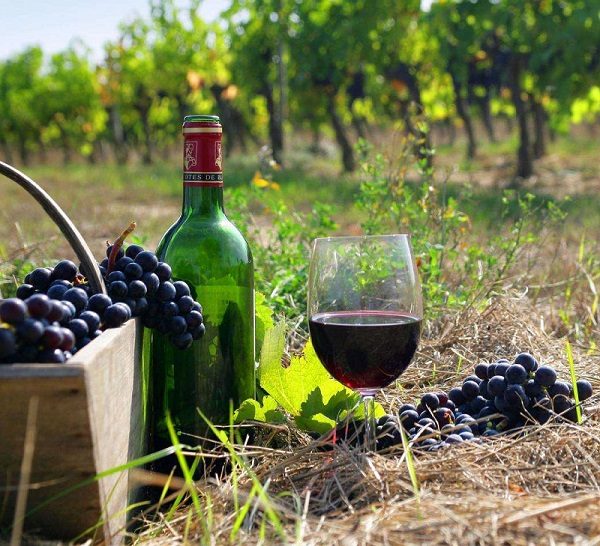
Landing
To plant grapes should be saplings in mid-autumn or in early spring.
Basic rules for the selection of seedlings:
- Do not buy autumn seedlings with lots of leaves.
- It is necessary to remove a piece of skin or cut off the top. The green flesh should be moist and juicy.
- When bent, the vine may crackle a little, but does not break.
- Kidneys should not fall off.
- Sapling must be grafted.
Before disembarking, choose a suitable place.
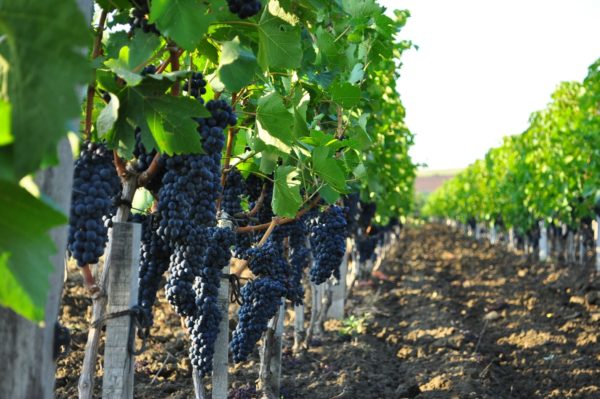
Choose the correct plot, taking into account the following factors:
- Suitable ground. The soil should be rich in minerals and limestone.
- Sufficient lighting. Sun rays should fall on the vines. For this reason, grapes must be located on the hills.
- Moderate wind. A windless environment can cause the formation of fungi, and a strong wind breaks clusters, leaves, shoots and can break the vine.
For planting, they dig up square pits with the size of a meter, in which fertilizers are applied: manure, wood ash, phosphate and potash fertilizers. Pegs are driven into each hole, to which seedlings are tied. Bush watered 2-3 buckets of water.
Saplings are planted in rows at a distance of at least 3 m from each other. The distance between the rows should be at least 1.5 m. This will facilitate the processing of the bush and the harvest.
Care for a young and mature vine
Proper planting of grapes does not guarantee the harvest of a rich harvest.When growing, care is also important.
Top dressing
During the growing season, the plant needs feeding, for which mineral and organic fertilizers are commonly used. It must be held no later than the 2nd week of July.
The subsequent top dressing of a bush can provoke the increased vegetation. A large number of leaves can close the grape clusters from the sun, as a result of which their maturation slows down.
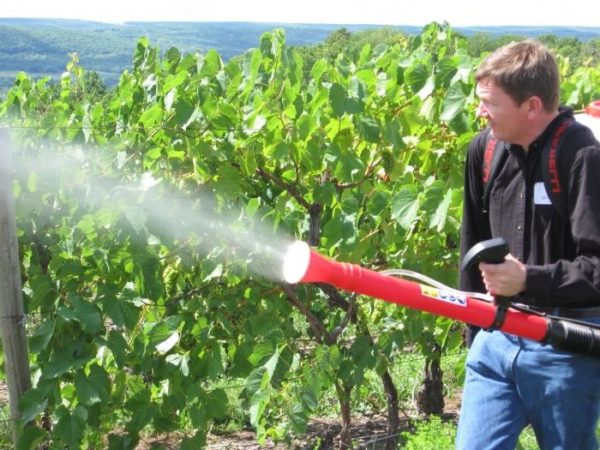
Watering
Berries during ripening need to be watered. Do not flood the bushes. This will adversely affect the quality of the berries - they will become watery. In addition, high humidity is a favorable condition for the development of fungus.
Pruning
To form a vineyard should cut off the branches of approximately 5-6 eyes. Because of this, the lower buds will begin to develop and, as a result, fertility will increase.
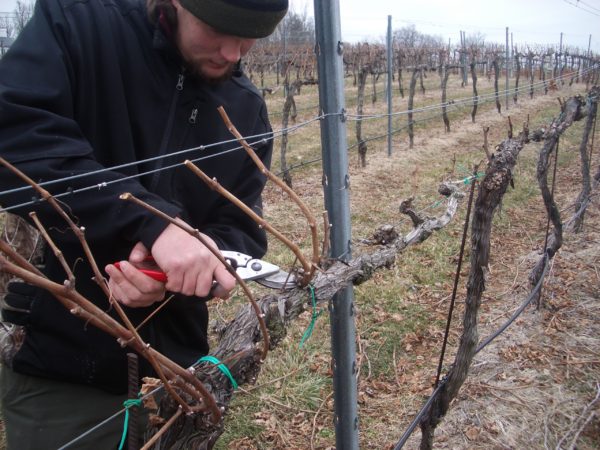
Breeding methods
Cabernet Sauvignon grapes are propagated by cuttings. For reproduction choose shoots of the same size. They are cut in 40-60 cm with 4 developed buds. Fragments are cleared of leaves and antennae. Then immersed in water for 24 hours, and then treated with copper sulfate.
Cuttings stored in a dark place, for example, in the basement. And they can also be dropped in the ground.
Diseases and pests
The grape variety Cabernet Sauvignon is highly resistant to diseases. However, it is recommended to carry out prophylaxis in order to avoid unpleasant consequences and to secure the vine.
This variety is afraid of:
- fungal diseases;
- spider and grape mite;
- rot;
- leafworm;
- itchiness
- Grape mite on the back of the leaf
- Grape leaves affected by itchiness
- Leaf curling as a result of losing leaflets.
The stores sell special products that are recommended for processing grapes for prevention. These drugs are toxic, so treatment should be carried out in early spring. If the lesion could not be avoided, the treatment must be completed no later than a month before picking up the fruit.
Wasps are very dangerous for the fruits of this variety.You should regularly inspect the site for the presence of their nests. To fight you need to put a special trap or you can cover clusters of gauze.
The Cabernet Sauvignon grape variety is unpretentious in its care. However, there are some features in breeding. Proper planting and care will help gather a rich harvest.
